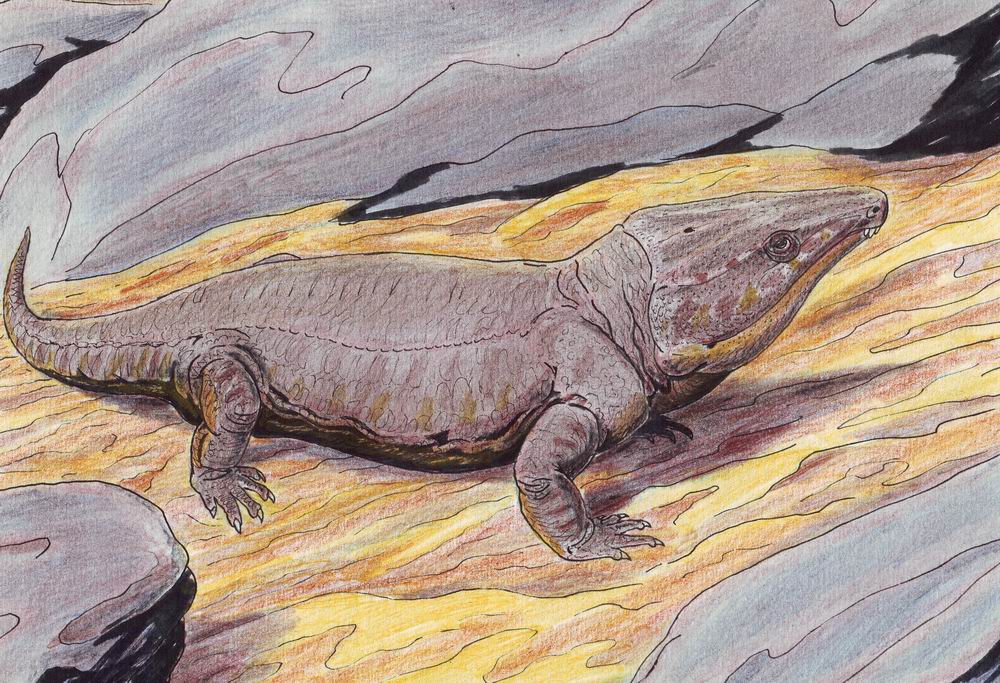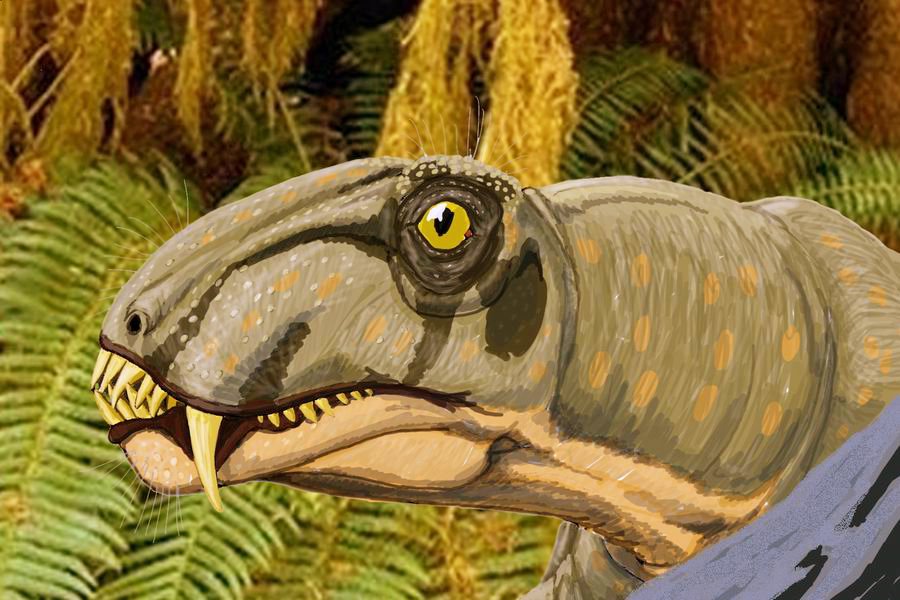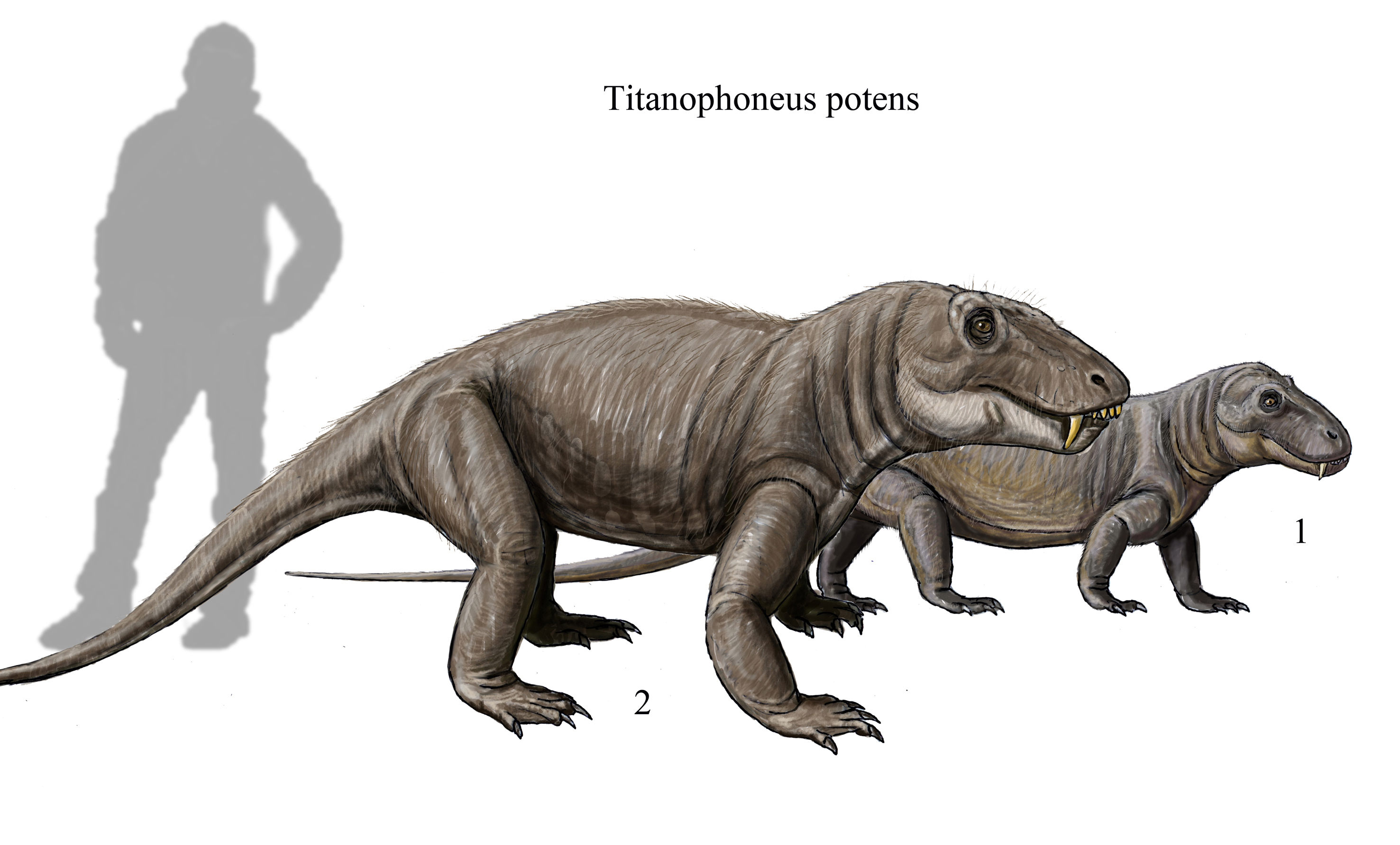|
Gansurhinus
''Gansurhinus'' is an extinct genus of moradisaurine captorhinid known from the Middle Permian Qingtoushan Formation of the Qilian Mountains and the Late Permian Naobaogou Formation in the Daqing Mountains of China. It was first named by Robert R. Reisz, Jun Liu, Jin-Ling Li and Johannes Müller in 2011 and the type species In International_Code_of_Zoological_Nomenclature, zoological nomenclature, a type species (''species typica'') is the species name with which the name of a genus or subgenus is considered to be permanently taxonomically associated, i.e., the spe ... is ''Gansurhinus qingtoushanensis''. A second species, ''Gansurhinus naobaogouensis'', was described in 2023 based on a relatively complete skeleton of an immature individual. References Captorhinidae Guadalupian tetrapods Lopingian tetrapods Permian tetrapods of Asia Permian China Prehistoric animals of China Fossil taxa described in 2011 {{paleo-reptile-stub ... [...More Info...] [...Related Items...] OR: [Wikipedia] [Google] [Baidu] |
Captorhinidae
Captorhinidae is an extinct family of tetrapods, traditionally considered primitive Reptile, reptiles, known from the late Carboniferous to the Late Permian. They had a cosmopolitan distribution across Pangea. Description Captorhinids are a clade of small to very large lizard-like animals that date from the Late Carboniferous through the Permian. Their skulls were much stronger than those of their relatives, the protorothyridids, and had teeth that were better able to deal with tough plant material. The postcranial skeleton is similar to those of seymouriamorphs and diadectomorphs; these animals were grouped together with the captorhinids in the order Cotylosauria as the first reptiles in the early 20th century, but are now usually regarded as Stem group, stem-amniotes no closer to reptiles than to mammals. Captorhinids have broad, robust skulls that are generally triangular in shape when seen in dorsal view. The premaxillae are characteristically downturned. The largest captorh ... [...More Info...] [...Related Items...] OR: [Wikipedia] [Google] [Baidu] |
Moradisaurinae
Captorhinidae is an extinct family of tetrapods, traditionally considered primitive reptiles, known from the late Carboniferous to the Late Permian. They had a cosmopolitan distribution across Pangea. Description Captorhinids are a clade of small to very large lizard-like animals that date from the Late Carboniferous through the Permian. Their skulls were much stronger than those of their relatives, the protorothyridids, and had teeth that were better able to deal with tough plant material. The postcranial skeleton is similar to those of seymouriamorphs and diadectomorphs; these animals were grouped together with the captorhinids in the order Cotylosauria as the first reptiles in the early 20th century, but are now usually regarded as stem-amniotes no closer to reptiles than to mammals. Captorhinids have broad, robust skulls that are generally triangular in shape when seen in dorsal view. The premaxillae are characteristically downturned. The largest captorhinid, the herbivor ... [...More Info...] [...Related Items...] OR: [Wikipedia] [Google] [Baidu] |
Captorhinid
Captorhinidae is an extinct family of tetrapods, traditionally considered primitive reptiles, known from the late Carboniferous to the Late Permian. They had a cosmopolitan distribution across Pangea. Description Captorhinids are a clade of small to very large lizard-like animals that date from the Late Carboniferous through the Permian. Their skulls were much stronger than those of their relatives, the protorothyridids, and had teeth that were better able to deal with tough plant material. The postcranial skeleton is similar to those of seymouriamorphs and diadectomorphs; these animals were grouped together with the captorhinids in the order Cotylosauria as the first reptiles in the early 20th century, but are now usually regarded as stem-amniotes no closer to reptiles than to mammals. Captorhinids have broad, robust skulls that are generally triangular in shape when seen in dorsal view. The premaxillae are characteristically downturned. The largest captorhinid, the ... [...More Info...] [...Related Items...] OR: [Wikipedia] [Google] [Baidu] |
2011 In Paleontology
Protozoa New taxa Plants Ferns and fern allies Gymnosperms Gymnosperm research *An amplified whole plant reconstruction of the Ypresian Princeton chert pine ''Pinus arnoldii'', expanding the diagnosis to include ''P. similkameenensis'' (Miller, 1973 in paleontology, 1973) foliage and wood plus unnamed pollens cones found in attachment to the ''P. arnoldii'' ovulate cones is published by Klymiuk, Stockey, & Rothwell. Angiosperms Nematoda Lobopods Vetulicolians Molluscs Arthropods Fishes Amphibians Newly named lepospondyls Newly named temnospondyls Newly named lissamphibians Basal reptiles Newly named captorhinids Newly named basal diapsids Newly named ichthyosaurs Lepidosauromorphs Newly named saurosphargids Newly named sauropterygians Newly named lizards Newly named snakes Turtles Newly named turtles Archosauromorphs Newly named basal archosauromorphs Archosaurs Synapsids Newly named non-mammalian synapsids Mammals Fo ... [...More Info...] [...Related Items...] OR: [Wikipedia] [Google] [Baidu] |
Naobaogou Formation
The Naobaogou Formation is a geological formation in the Daqing Mountains of China. It is likely of Lopingian (Late Permian) age. It consists of three rhythms of sediment, labeled members I-III primarily of purple siltstone, but each with a thick basal Conglomerate (geology), conglomerate bed. It is notable for its fossil content, producing one of the most diverse Late Permian vertebrate faunas outside Russia and South Africa. Vertebrate fauna References {{reflist Permian System of Asia Permian China Lopingian geology ... [...More Info...] [...Related Items...] OR: [Wikipedia] [Google] [Baidu] |
Qingtoushan Formation
The Qingtoushan Formation is a Middle Permian-age geologic Formation (stratigraphy), formation in the Qilian Mountains of Gansu, China. It is known for its diverse tetrapod fauna known as the Dashankou fauna, which likely dates to the Roadian, and includes some of the oldest known therapsids. This formation was previously erroneously named as the Xidagou Formation, a name which applies to otherwise Triassic strata in the northern Qillian Mountains. The formation is over 300 metres thick, and primarily consists of Red beds, purple-red Grain size, coarse sandstones, with minor purple mudstone.Liu J, Qinghua S, Keqin S, Lu L (2012The horizon of Dashankou Fauna and the Permo-Triassic strata in northern Qilian area, China Vertebr Palasiat 50(4):373–381 (In Chinese) Paleobiota Synapsida Sauropsida Chronisuchia Temnospondyli References Geologic formations of China Permian System of Asia {{PRChina-geo-stub ... [...More Info...] [...Related Items...] OR: [Wikipedia] [Google] [Baidu] |
Genus
Genus (; : genera ) is a taxonomic rank above species and below family (taxonomy), family as used in the biological classification of extant taxon, living and fossil organisms as well as Virus classification#ICTV classification, viruses. In binomial nomenclature, the genus name forms the first part of the binomial species name for each species within the genus. :E.g. ''Panthera leo'' (lion) and ''Panthera onca'' (jaguar) are two species within the genus ''Panthera''. ''Panthera'' is a genus within the family Felidae. The composition of a genus is determined by taxonomy (biology), taxonomists. The standards for genus classification are not strictly codified, so different authorities often produce different classifications for genera. There are some general practices used, however, including the idea that a newly defined genus should fulfill these three criteria to be descriptively useful: # monophyly – all descendants of an ancestral taxon are grouped together (i.e. Phylogeneti ... [...More Info...] [...Related Items...] OR: [Wikipedia] [Google] [Baidu] |
Type Species
In International_Code_of_Zoological_Nomenclature, zoological nomenclature, a type species (''species typica'') is the species name with which the name of a genus or subgenus is considered to be permanently taxonomically associated, i.e., the species that contains the biological Type (biology), type wiktionary:en:specimen, specimen (or specimens). Article 67.1 A similar concept is used for suprageneric groups and called a type genus. In botanical nomenclature, these terms have no formal standing under the International Code of Nomenclature for algae, fungi, and plants, code of nomenclature, but are sometimes borrowed from zoological nomenclature. In botany, the type of a genus name is a specimen (or, rarely, an illustration) which is also the type of a species name. The species name with that type can also be referred to as the type of the genus name. Names of genus and family ranks, the various subdivisions of those ranks, and some higher-rank names based on genus names, have suc ... [...More Info...] [...Related Items...] OR: [Wikipedia] [Google] [Baidu] |
Permian China
The Permian ( ) is a geologic period and stratigraphic system which spans 47 million years, from the end of the Carboniferous Period million years ago (Mya), to the beginning of the Triassic Period 251.902 Mya. It is the sixth and last period of the Paleozoic Era; the following Triassic Period belongs to the Mesozoic Era. The concept of the Permian was introduced in 1841 by geologist Sir Roderick Murchison, who named it after the region of Perm in Russia. The Permian witnessed the diversification of the two groups of amniotes, the synapsids and the sauropsids (reptiles). The world at the time was dominated by the supercontinent Pangaea, which had formed due to the collision of Euramerica and Gondwana during the Carboniferous. Pangaea was surrounded by the superocean Panthalassa. The Carboniferous rainforest collapse left behind vast regions of desert within the continental interior. Amniotes, which could better cope with these drier conditions, rose to dominance in place of th ... [...More Info...] [...Related Items...] OR: [Wikipedia] [Google] [Baidu] |
Lopingian Tetrapods
The Lopingian is the uppermost series/last epoch of the Permian. It is the last epoch of the Paleozoic. The Lopingian was preceded by the Guadalupian and followed by the Early Triassic. The Lopingian is often synonymous with the informal terms late Permian or upper Permian. The name was introduced by Amadeus William Grabau in 1931 and derives from Leping, Jiangxi in China. It consists of two stages/ ages. The earlier is the Wuchiapingian and the later is the Changhsingian. The International Chronostratigraphic Chart (v2018/07) provides a numerical age of 259.1 ±0.5 Ma. If a Global Boundary Stratotype Section and Point (GSSP) has been approved, the lower boundary of the earliest stage determines numerical age of an epoch. The GSSP for the Wuchiapingian has a numerical age of 259.8 ± 0.4 Ma. Evidence from Milankovitch cycles suggests that the length of an Earth day during this epoch was approximately 22 hours. Geography During the Lopingian, most of the earth was in the ... [...More Info...] [...Related Items...] OR: [Wikipedia] [Google] [Baidu] |
Guadalupian Tetrapods
The Guadalupian is the second and middle series/epoch of the Permian. The Guadalupian was preceded by the Cisuralian and followed by the Lopingian. It is named after the Guadalupe Mountains of New Mexico and Texas, and dates between 272.95 ± 0.5 – 259.1 ± 0.4 Mya. The series saw the rise of the therapsids, a minor extinction event called Olson's Extinction and a significant mass extinction called the end-Capitanian extinction event. The Guadalupian is also known as the Middle Permian. Name and background The Guadalupian is the second and middle series or epoch of the Permian. Previously called Middle Permian, the name of this epoch is part of a revision of Permian stratigraphy for standard global correlation. The name "Guadalupian" was first proposed in the early 1900s, and approved by the International Subcommission on Permian Stratigraphy in 1996. References to the Middle Permian still exist. The Guadalupian was preceded by the Cisuralian and followed by the Lopingian. ... [...More Info...] [...Related Items...] OR: [Wikipedia] [Google] [Baidu] |








